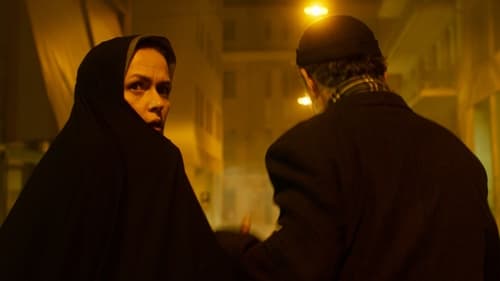
Farrokh
Cuando la joven iraní Pari y su religioso esposo, mucho mayor que ella, llegan a Atenas para visitar a su hijo, este no aparece para recogerles en el aeropuerto como prometió. Tampoco vive en la dirección que les había dado. Ambos salen en busca de su hijo, pero pronto se encuentran en medio de una ciudad atravesada por las peleas callejeras y las barricadas en llamas. Como su esposo no habla inglés, Pari debe salir de su tradicional rol de esposa musulmana sumisa y silenciosa para poder comunicarse con los habitantes de este país extranjero y localizar a su hijo. A medida que avanza la búsqueda de su hijo, Pari va logrando una independencia cada vez mayor y reuniendo un coraje que nunca supo que tenía.

The film relates the story of a surgeon (Doctor Pārsā) who returns to Iran after living in Germany for 33 years. Arriving in Tehran, Doctor Pārsā performs a heart operation on the nephew of the family friend Mr Ghanāti. Mr Ghanāti urges him to travel with him to his home town, Bam. On the trip, they drive past the rubble and destruction and Pārsā remembers back to his childhood.[citation needed]

Screenplay
Shot with striking immediacy by a subjective camera, “Angst isst Seele auf” assumes the point of view of a black actor in Germany dealing with racist abuse as he prepares to appear in a play based on Fassbinder’s film, about the taboo relationship between an older German woman and an Arab man. Sharing the same lead actress (Brigitte Mira), cinematographer (Jürgen Jürges), and editor (Thea Eymèsz) as in Rainer Werner Fassbinder’s 1974 Film “Angst essen Seele auf”, these twin works offer a searing indictment of prejudice within German society.

Director
Shot with striking immediacy by a subjective camera, “Angst isst Seele auf” assumes the point of view of a black actor in Germany dealing with racist abuse as he prepares to appear in a play based on Fassbinder’s film, about the taboo relationship between an older German woman and an Arab man. Sharing the same lead actress (Brigitte Mira), cinematographer (Jürgen Jürges), and editor (Thea Eymèsz) as in Rainer Werner Fassbinder’s 1974 Film “Angst essen Seele auf”, these twin works offer a searing indictment of prejudice within German society.



